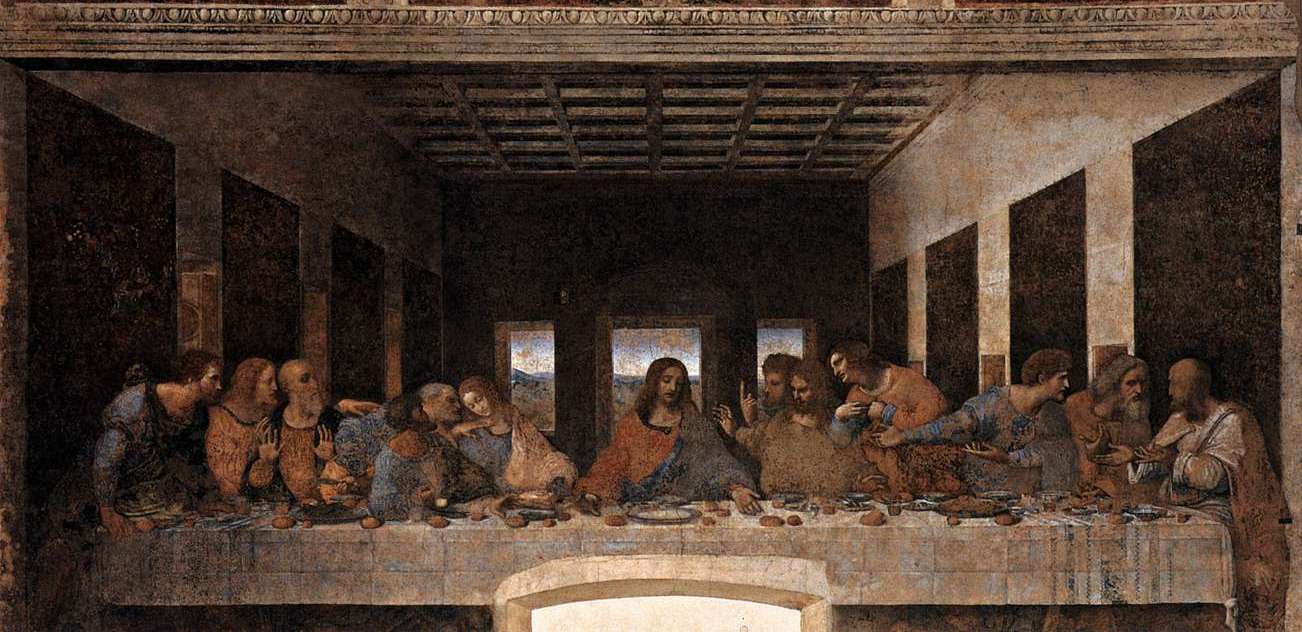By Bill Hendrick from WebMD Medical News Reviewed by Laura J. Martin, MD

March 24, 2010 -- Paintings of the Last Supper over the past millennium show that plate and food serving sizes have gotten larger throughout history, possibly foretelling today’s supersized portions, according to a new study.
The findings suggest that the phenomenon of serving bigger portions on bigger plates, which pushes people to overeat, has occurred gradually over the past 1,000 years, says co-author Brian Wansink, PhD, a marketing and economics professor at Cornell University and an expert on eating habits.
“We took the 52 most famous paintings of the Last Supper and analyzed the size of the entrees, bread, and plates, relative to the average size of the average head in the painting,” he says in a news release.

Wansink and his brother and co-author, Craig Wansink, professor of religious studies at Virginia Wesleyan College, used computer-aided design technology that allowed items in 52 paintings to be scanned, rotated, and calculated, regardless of the orientation of the objects in the artwork. “To account for the varying dimensions of the paintings, the average sizes of these items were indexed based on the average size of the heads depicted in the paintings,” the authors write.
The main discernable dishes depicted in the paintings included fish or eel (18%), lamb (14%), and pork (7%), and 46% of the paintings had no discernable main dish.
'Last Supper' Portions Growing

The study, published in the April 2010 issue of the International Journal of Obesity, finds that the size of the entrees in Last Supper paintings has progressively increased 66%, plate size 66%, and bread size 23% in the past 1,000 years.
“The last thousand years have witnessed dramatic increases in the production, availability, safety, abundance, and affordability of food,” says Brian Wansink, author of Mindless Eating: Why We Eat More Than We Think.
“We think that as art imitates life, these changes have been reflected in paintings of history’s most famous dinner,” he says.

The researchers used 52 paintings depicting the Last Supper that were featured in the 2000 book Last Supper by Phaidon Press.
Craig Wansink tells WebMD in an email that “the use of the head in measuring the size of the bread was simply to focus on proportionality between the paintings.”
In short, the scholars say the trend of larger plates and portion sizes detected in recent years and linked to obesity is a phenomenon that started hundreds or even more than 1,000 years ago.
They examined 10 paintings of the Last Supper completed between 1000-1300, five done between 1300 and 1400, 15 between 1400 and 1500, 13 between 1500 ad 1600, and nine between 1600 and the year 2000.
“Perhaps the increasing portion sizes and food availability we have recently noticed is rooted in a general trend that has been artistically depicted for more than a millennium,” the authors write.

No comments:
Post a Comment